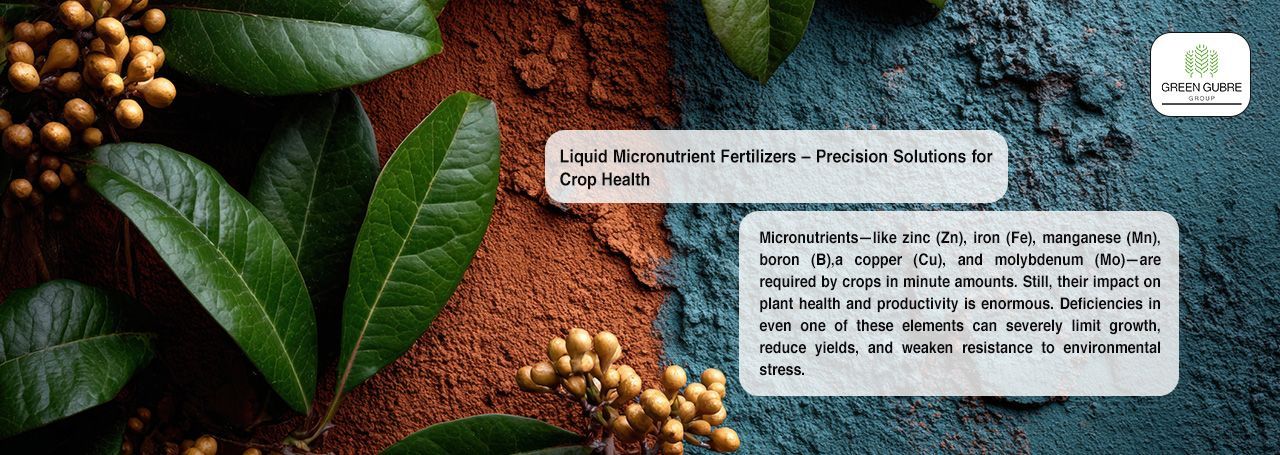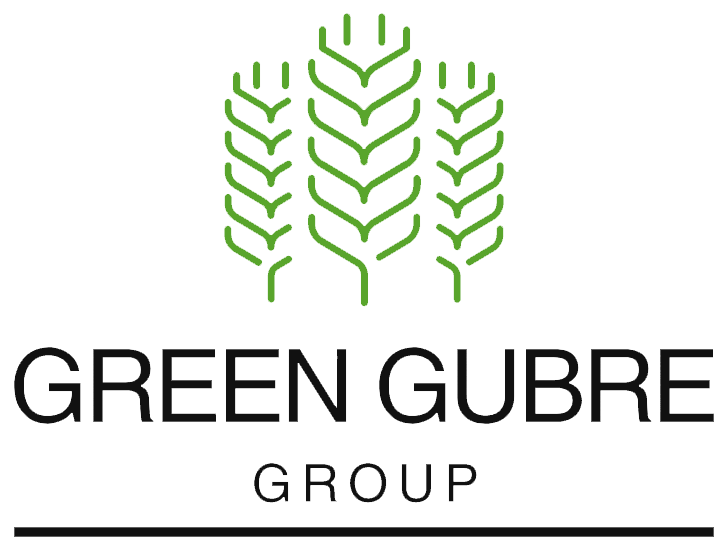Liquid Micronutrient Fertilizers – Precision Solutions for Crop Health
Liquid Micronutrient Fertilizers – Precision Solutions for Crop Health

Introduction: Small Elements, Big Impact
Micronutrients—like zinc (Zn), iron (Fe), manganese (Mn), boron (B), copper (Cu), and molybdenum (Mo)—are required by crops in minute amounts. Still, their impact on plant health and productivity is enormous. Deficiencies in even one of these elements can severely limit growth, reduce yields, and weaken resistance to environmental stress.
Liquid micronutrient fertilizers are gaining popularity for their ease of use, rapid absorption, and compatibility with modern fertigation and foliar systems. In high-value, intensively managed crops, they offer a powerful tool for targeted nutrition and fast correction of deficiencies.
Why Liquid Micronutrients Are Game-Changers
Traditional granular or powdered micronutrients often suffer from poor solubility, uneven distribution, or delayed uptake. Liquid formulations overcome these issues by offering:
- Rapid foliar absorption
- Homogeneous application through irrigation systems
- Improved bioavailability at various soil pH levels
- Easy mixing with NPK, pesticides, and biostimulants
This makes them ideal for precision agriculture, where nutrient timing and placement are critical.
Key Micronutrients in Liquid Fertilizers and Their Benefits
| Micronutrient | Role in Plant Health | Common Deficiency Symptoms |
|---|---|---|
| Zinc (Zn) | Hormone synthesis, root growth | Shortened internodes, leaf chlorosis |
| Iron (Fe) | Chlorophyll synthesis | Interveinal yellowing in young leaves |
| Manganese (Mn) | Enzyme activation | Pale green leaves, poor photosynthesis |
| Boron (B) | Pollen formation, cell wall structure | Cracked fruits, poor flowering |
| Copper (Cu) | Lignin formation, disease resistance | Wilting, leaf tip death |
| Molybdenum (Mo) | Nitrogen metabolism | Leaf distortion, yellowing |
By delivering these nutrients in a liquid and chelated form, plants absorb them faster and more efficiently.
Application Methods: Where Liquid Micronutrients Shine
- Foliar Spray
- Direct nutrient entry through leaves
- Useful during flowering or stress periods
- Fast correction of visible deficiency symptoms
- Fertigation
- Delivered through drip or sprinkler systems
- Suitable for horticulture, greenhouses, and orchards
- Allows frequent, low-dose feeding
- Soil Application (Starter + Banding)
- For early-stage root uptake
- Chelated forms remain stable in various pH ranges
- Seed Coating (Micronutrient Priming)
- Enhances early root vigor and seedling health
- Widely used in maize, legumes, and cereals
Green Gubre Group’s Liquid Micronutrient Range
We offer a premium line of high-purity liquid micronutrient products that deliver performance across crop types and growing systems:
- Fe-EDDHA (6%) Liquid Iron – Stays soluble in high-pH soils
- Zn-EDTA (6% & 9%) Liquid Zinc – Ideal for cereals, maize, citrus
- B-MAX (Boron 10.5%) – Highly stable and foliar-ready
- Mn-EDTA + Cu-EDTA Combo – Dual-action for enzyme activation and stress resistance
- Micronutrient Mix (Zn + Mn + B + Cu) – All-in-one blend for fertigation or foliar use
Each product is:
- Chelated or organically complexed for better plant availability
- Free of chloride and heavy metals
- Compatible with most fertilizers and crop protection chemicals
Target Crops and Use Cases
- Cereals (Wheat, Maize, Rice): Zinc and iron are critical for tillering and grain fill
- Vegetables (Tomato, Lettuce, Onion): Boron and manganese enhance flowering and quality.
- Fruits (Citrus, Grapes, Banana): Manganese and copper improve disease resistance
- Oilseeds (Soybean, Canola): Boron and molybdenum for reproductive stages
- Protected Crops (Greenhouses): All micronutrients are dosed precisely via fertigation
Benefits of Switching to Liquid Micronutrient Fertilizers
| Advantage | Impact |
|---|---|
| Faster correction | Prevents yield losses from micronutrient deficiencies |
| Better mixing | Works with NPKs, biostimulants, or pesticides |
| Precision feeding | Matches crop growth stages and requirements |
| Reduced environmental risk | Lower runoff compared to granular forms |
| Sustainable productivity | Improves overall plant metabolism and immunity |
Conclusion: Don’t Let a Small Deficiency Become a Big Problem
Micronutrient deficiencies often go unnoticed until it’s too late. Liquid micronutrient fertilizers offer a fast, efficient, and flexible solution to keep your crops healthy, productive, and resilient.
At Green Gubre Group, we empower farmers with innovative micronutrient technologies that support balanced nutrition, reduce losses, and deliver consistent results across diverse growing conditions.
Strong yields start with strong nutrition—even at the micro level.




